Description
The commentary will provide an evaluation of what constitutes a “significant impairment” in the context of actual spacecraft operation and will address the following questions: (1) can existing schemes for evaluation of chemical neurotoxicity be used as a guide for evaluating CNS effects of radiation; (2) can key events related to behavior or performance impairment and/or late effects such as dementia be identified; (3) are nonhuman primate experiments necessary for the extrapolation from animal effects to risk of impaired human performance; (4) are there radiation exposure levels below which the risk of significant impairment is minimal; (5) how might space radiation “interact” with other aspects of a mission that would impair performance, both for the individual and the team; (6) what is the relative balance between the likelihood of neurobehavioral effects that would impair operational performance and the likelihood that serious neurodegenerative disease develop such as Alzheimer’s, Parkinson’s, Huntington’s, amyotrophic lateral sclerosis (ALS), and dementia; and (7) does the human CNS have compensation mechanisms that would influence the likelihood of getting to a level of impairment that would adversely affect performance and the mission?
Goal
Scientific Committee 1-24 Phase 2 will prepare a report providing a detailed study of the potential damage to the central nervous system (CNS) from the space radiation environment and its implications for long-term space missions.
2016 Accomplishments
- Initial planning teleconference involving Committee members held on January 19, 2016.
- First face-to-face Committee meeting was held February 11–12, 2016, in Galveston, Texas, conjunction with the NASA Human Research Program annual workshop. Topics addressed included an introduction to NCRP and its procedures, a summary of the phase 1 commentary report, and a discussion of the work for the Phase 2 report.
- A Committee meeting was held May 25–26, 2016, in Bethesda, Maryland. Initial presentations to the Committee by several members relative to their anticipated contributions to the report.
- A Committee meeting was held August 16-17, 2016, in Bethesda, Maryland. Additional presentations to the Committee of anticipated report contributions by members were made. An initial outline of the report was drafted by the Committee.
- A Committee meeting was held November 15-16, 2017, in Houston, Texas. Overview presentations of NASA policy, procedures, monitoring and research related to astronaut mental health during space missions were made by NASA JSC personnel. Tours of NASA facilities by Committee members were made.
Prior Accomplishments
First committee meeting held in 2016
Scheduled Activities
An opportunistic, half-day meeting of the Committee will be held in Galveston, Texas, during the January 23-26, 2017, NASA Human Research Program annual workshop. Committee members have been tasked with developing initial drafts/detailed outlines of their assign sections of the Committee report for dissemination to the other members at that time.
Support
National Aeronautics and Space Adminsitration
Membership
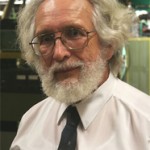
LESLIE A. BRABY
has been a Research Professor at Texas A&M University since 1996. His previous experience includes Biology and Chemistry Department Staff Scientist from 1971 to 1991 and Radiation Physics and Chemistry Section Manager from 1991 to 1995 at Battelle, Pacific Northwest National Laboratory. He received his BA degree from Linfield College and PhD from Oregon State University in 1972. Dr. Braby is a former member of the NCRP Board of Directors and a member of several NCRP scientific committees (SC) including SC 88 on Fluence as a Basis of a System of Radiation Protection for Astronauts, SC 1-7 on Research Needs for Deep Space Missions, chair of SC 1-11 on Safety Considerations for Pulsed Fast Neutron Surveillance Systems, SC 6-1 on Uncertainties in Measuring External Beam Irradiation, SC 1-20 on the biological effects of low energy x rays, and Chairman of SC 6-5 on Safety of Cargo Inspection Systems Using High Energy Photons. He was also Chair of the International Commission on Radiation Units and Measurements (ICRU) working committee on characterizing low level radiation exposure, and member of ICRU working committee to prepare a report on microdosimetry.
|

Jacob Raber
|

Polly Y. Chang
is the Scientific Director of the Non-clinical Development Program in SRI International's Biosciences Division. Dr. Chang received her BA in mammalian physiology, MA in bioradiology, and PhD in radiation biology/biophysics from the University of California, Berkeley. She is the principal investigator (PI) on a number of National Institute of Health, National Aeronautics and Space Administration, Biomedical Advanced Research and Development Authority (BARDA), and commercially-sponsored projects, using both in vitro and in vivo model systems to understand mechanisms of radiation injury and efficacy of medical countermeasures. As PI for the National Institute of Allergy and Infectious Diseases-supported medical countermeasure product development program, she and her team conducted a battery of studies that contributed to the Food and Drug Administration's approval of Romiplostim for hematopoietic syndrome under the Animal Rule. During her tenure at SRI, Dr. Chang has led multiple nonclinical product development programs for vaccines, biologics, metal decorporation agents, and small molecules that have resulted in over 10 approved investigational new drug applications. In collaboration with a team of SRI investigators, she is working on a BARDA-funded biodosimetry project to develop a hand-held field-deployable device for early detection of radiation exposure and triage. She has served on NCRP Scientific Committees for Report No. 181 on the evaluation of the biological effectiveness of low energy photons and electrons in inducing cancers in humans and Report No. 183 on radiation exposure in space and the potential for central nervous system effects. |
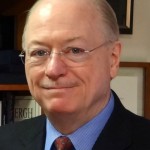
David F. Dinges
|
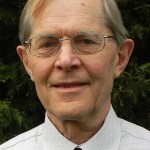
Dudley T. Goodhead
|
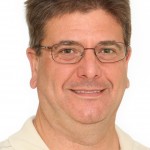
David Herr
As the head of the Neurotoxicology Branch, the group conducts research on the impact of environmental chemicals (and mixtures of chemicals and/or nonchemical factors) on the nervous system, including measures of function (e.g., physiological, behavioral and biochemical) and the determination of the onset, progression, duration and reversibility of neurotoxic injury. One goal of the research is the identification of changes in key events in these processes will assist with assessment of the suitability of in vitro test schemes to predict neurotoxic potential of xenobiotics. This work is done in the context of the Toxicity Assessment Division’s efforts to identify and characterize the toxicity of environmental chemicals to reproductive and nervous system structure and function at all life stages. Dr. Herr’s personal laboratory research involves developing and applying neurophysiological methods, combined with assessment of biomarkers of neurotoxicity, to address these research areas. |

John W. Hopewell
His research has been directed to the study of normal tissue responses after radiation exposure. This has been in relation to the underlying mechanisms of damage, its potential amelioration, and the understanding of the clinical effects of dose fractionation and dose-rate. While the majority of the studies have involved work with photons, extensive normal tissue studies were also undertaken with fast neutrons and more recently with the mixed field irradiation exposure associated with the application of Boron Neutron Capture Therapy (BNCT). This latter work was carried out in collaboration with several of the major BNCT Centers, including Helsinki (Finland), Studsvik (Sweden), Brookhaven National Laboratory (United States), Buenos Aries (Argentina), MIT (United States) and the University of Birmingham (United Kingdom). His work on skin was also extended to radiological protection and formed the basis for both nation and international guidelines. These formed part of International Commission on Radiological Protection Publications 59 (1991) and 85 (2001) and the NCRP Reports No. 130 (1999) and No. 168 (2011). Current studies are related to obtaining a better understanding of the use of Gamma Knife Surgery for the treatment of central nervous system diseases. |

Janice L. Huff
Dr. Huff has held the positions of research assistant professor at the University of Nevada, Las Vegas, where she studied integrin-mediated cancer cell migration and metastasis, and was also a research scientist at Bioforce Nanosciences, Inc., a bio-nanotechnology company specializing in development of ultraminiaturized biodiagnostic tools and technologies. She received a BS in Microbiology and a BA in Psychology from the University of Rochester, and earned a PhD in Microbiology from the University of Virginia studying molecular biology, oncogenes and signal transduction in the laboratory of J. Thomas Parsons. Dr. Huff was elected to the NCRP in 2017, was a member of Scientific Committee (SC) 1-24P2: Radiation Exposures in Space and the Potential of Central Nervous System Effects, and currently serves on SC 1-27: Evaluation of Sex-Specific Differences in Lung Cancer Radiation Risks and Recommendations for Use in Transfer and Projection Models. She was a member of the Organizing Committee for the 2019 and 2020 NCRP Annual Meetings. |
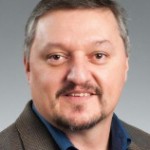
Kevin R. Krull
|

Richard M. Linnehan
|
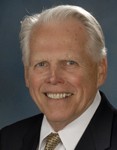
Thomas J. MacVittie
He earned MS and PhD degrees in radiation biology at the State University of New York at Buffalo and has more than 40 y of experience as a radiobiologist in the field of experimental hematology and the effects of acute radiation exposure. He has published 207 peer-reviewed manuscripts and 47 chapters in books or proceedings. He has co-edited five books published from international meetings organized on radiation effects and treatment. Dr. MacVittie has served as an advisor to the World Health Organization Collaborating Centers in Radiation Emergency Medical Preparedness and Assistance and as a member of the North Atlantic Treaty Organization’s Radiation Research Study groups and the Task Group for the International Council on Radiation Protection entitled “Radiation Effects on Normal Tissue.” Dr. MacVittie also served on the inaugural National Biodefense Science Board Federal Advisory Committee. The MacVittie Laboratory has developed an Animal Model Research Platform that positions the research team to carry the lead in an integrated effort to develop the most effective products to treat the acute radiation syndrome (ARS) and the delayed effects of acute radiation exposure to include a strategic focus on MCM efficacy against multiple organ injury, both acute and delayed. The MacVittie Research Team and its accumulated data base served as the focal point for recent efforts to design the initial “pivotal” trials in nonhuman primates to determine the treatment efficacy of neupogen and neulasta to treat potentially lethally irradiated personnel. These are the first two MCM approved by the U.S. Food and Drug Administration under the “animal rule” to treat the hematopoietic ARS. |
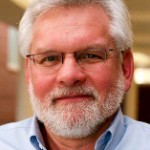
M. Kerry O’Banion
Dr. O’Banion received his MD and PhD in Microbiology from the University of Illinois, Champaign-Urbana and carried out postdoctoral work as a Wilmot Cancer Fellow at the University of Rochester that contributed to the discovery of cyclooxygenase-2 (COX-2) as a critical mediator of inflammation. In addition to his research, Dr. O’Banion has directed Rochester’s Medical Scientist Training (MD-PhD) Program since 2000. |
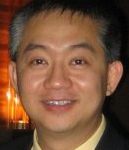 Michael Qin Michael Qin |
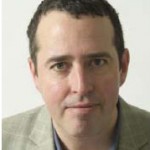
James Root
|
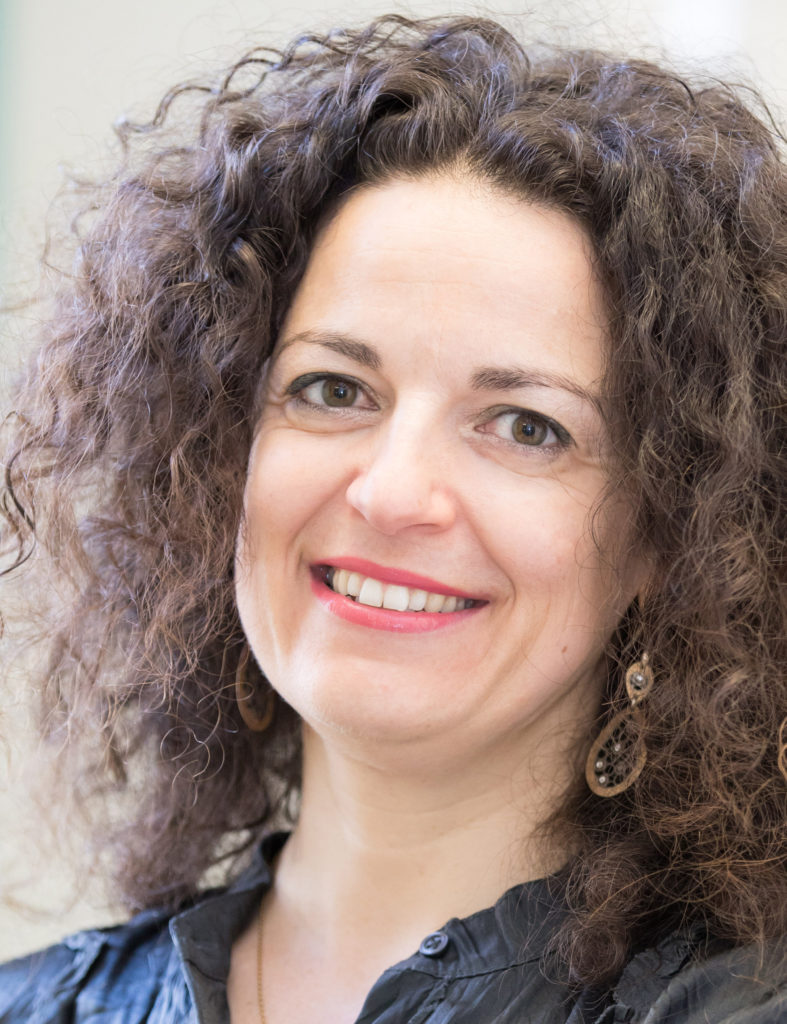
Susanna Rosi
|
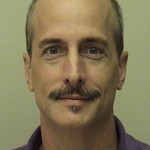
Peter Winsauer
|
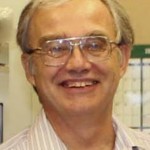
GREGORY A. NELSON earned his BS in chemistry from Caltech and his PhD in Cell and Developmental Biology at Harvard Medical School in 1979 where his thesis work was on the genetics of sex determination and spermatogenesis in the nematode C. elegans. During a postdoctoral fellowship at Harvard he investigated regulation of cell surface distribution of immunoglobulin on lymphocytes and its control by the calcium regulator, calmodulin. He joined the Jet Propulsion Laboratory in 1982 where he became interested in the space radiation environment and developed C. elegans as a biodosimetry system for spaceflight applications. As principal investigator, he flew the nematode experiments using the European Space Agency's Biorack facility on shuttle missions STS-42 (1992) and STS-76 (1996). He has since participated in shuttle missions STS-108, -118 and -135 examining effects of spaceflight on the immune and nervous systems of mice as part of the commercial biotechnology technology mission experiments 1-3. The spaceflight experiences led him to participate in a number of National Aeronautics and Space Administration (NASA) programmatic activities, including the design of a dedicated biological satellite (LifeSat) system. He joined Loma Linda University (LLU) in 1996 to direct its new radiobiology program and to develop the infrastructure needed to do space research with proton beams. As the LLU radiobiology program grew, he was able to maintain a modest research activity with C. elegans, and later began collaborations on projects that have investigated the effects of protons and charged particles on immune responses, thyroid cells in three-dimensional tissue models, microvasculature, and rodent behavior. More recently he served as principal investigator on two NASA program projects (NSCOR) team involving nine institutions that investigate how space-like radiation exposures produce time- and dose-dependent changes in the mouse brain. He was a founding director of NASA's Space Radiation Summer School held at the Brookhaven National Laboratory and serves as a member of NCRP. He recently completed a NASA-funded study investigating genes regulating bystander effects in C. elegans in a study involving RNA interference screening and microbeam-based experiments in collaboration with Professors Leslie Braby and John Ford of Texas A&M University and was appointed Adjunct Professor of Nuclear Engineering at TAMU in 2008. Another ongoing study funded by the U.S. Department of Energy investigates the effects of low doses of gamma rays on adaptive immunity in the mouse. Dr. Nelson is currently Professor of Basic Sciences and Radiation Medicine at Loma Linda University. |

Lawrence W. Townsend
|



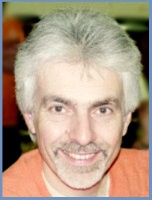 received his BSc in chemistry and his MSc in pharmacochemistry from the Free University of Amsterdam, and his PhD in Molecular Genetics and Virology from the Weizmann Institute of Science. He received further training under the guidance of Floyd Bloom at the Scripps Research Institute in La Jolla and Lennart Mucke at the Gladstone Institutes and University of California in San Francisco. In 2001, he was recruited to Oregon Health and Science University in Portland, Oregon. He is a professor in the Departments of Behavioral Neuroscience, Neurology, and Radiation Medicine and an affiliate scientist in the division of Neuroscience at the Oregon National Primate Research Center. He was an Ellison Medical Foundation New Scholar in Aging from 2002 to 2006. His research is devoted to characterizing effects of environmental and genetic factors on brain function, identifying of affected pathways, and developing treatments to antagonize detrimental effects. As environmental factors, the focus is on irradiation, a high-fat diet, stress, second-hand smoke, and related behavioral and cognitive changes. For the genetic factors, he particularly studies the isoform-dependent effects of apolipoprotein E. The three major human apoE isoforms (E2, E3, and E4) differ in their risk to develop cognitive impairments with age and following various environmental challenges.
received his BSc in chemistry and his MSc in pharmacochemistry from the Free University of Amsterdam, and his PhD in Molecular Genetics and Virology from the Weizmann Institute of Science. He received further training under the guidance of Floyd Bloom at the Scripps Research Institute in La Jolla and Lennart Mucke at the Gladstone Institutes and University of California in San Francisco. In 2001, he was recruited to Oregon Health and Science University in Portland, Oregon. He is a professor in the Departments of Behavioral Neuroscience, Neurology, and Radiation Medicine and an affiliate scientist in the division of Neuroscience at the Oregon National Primate Research Center. He was an Ellison Medical Foundation New Scholar in Aging from 2002 to 2006. His research is devoted to characterizing effects of environmental and genetic factors on brain function, identifying of affected pathways, and developing treatments to antagonize detrimental effects. As environmental factors, the focus is on irradiation, a high-fat diet, stress, second-hand smoke, and related behavioral and cognitive changes. For the genetic factors, he particularly studies the isoform-dependent effects of apolipoprotein E. The three major human apoE isoforms (E2, E3, and E4) differ in their risk to develop cognitive impairments with age and following various environmental challenges.
 is a tenured Professor of Psychiatry, Director of the Unit for Experimental Psychiatry, and Chief of the Division of Sleep and Chronobiology, at the University of Pennsylvania Perelman School of Medicine in Philadelphia, Pennsylvania. For more than two decades he and his colleagues have conducted both laboratory and field research for the National Aeronautics and Space Administration (NASA) on ways to predict, prevent, detect and mitigate behavioral health risks to astronauts, including research on the International Space Station (ISS), in numerous Earth-based space analogs (Mars 500, NEEMO, HERA, Neumayer Antarctic Station, etc.), and in his laboratory at Penn (ICARUS). His research focuses on identifying the manner in which conditions of spaceflight affect sleep and circadian regulation of brain and behavior, especially affective, cognitive, neurobehavioral and psychosocial functioning, as well as regulatory biology involved in immune, inflammatory, endocrine and metabolic responses. His extensive study of astronauts on ISS, and in various space analog environments, have helped inform the need for regular assessments of cognitive and affective functioning in spaceflight via brief, well-validated measures, such as the Psychomotor Vigilance Test, which he invented, and a neuroimaging-based cognitive performance test battery (COGNITION) developed by him and his colleagues. In addition to his research for human spaceflight, his scientific findings on human sleep need and performance are often used on Earth in public policy areas relative to work hours, prevention and detection of fatigue, and standards for health and safety. He has more than 350 scholarly publications and is a member of Penn’s Center for Sleep and Circadian Neurobiology, the Institute for Translational Medicine and Therapeutics, the Center for Functional Neuroimaging, the Penn Genomics Frontiers Institute, and both Penn’s Neuroscience and Psychology Graduate Groups. He lectures in the Perelman School of Medicine, and has an extensive track record of training. He has served on a National Institutes of Health Advisory Council and numerous IOM/NRC committees; been the Editor-in-Chief of SLEEP; president of the World Sleep Federation; president of the (U.S.) Sleep Research Society; and on the Board of Directors of the American Academy of Sleep Medicine and National Sleep Foundation. He was a scientific Team Leader for the National Space Biomedical Research Institute, and he is an elected member of the International Academy of Astronautics. He is the recipient of numerous awards, including the Senator Mark O. Hatfield Public Policy Award from the American Academy of Sleep Medicine; the Decade of Behavior Research Award from the American Psychological Association; the NASA Distinguished Public Service Medal; the Raymond F. Longacre Award for Outstanding Accomplishment in the Psychological and Psychiatric Aspects of Aerospace Medicine from the Aerospace Medical Association; the Pioneer Award from the National Space Biomedical Research Institute; the Nathaniel Kleitman Distinguished Service Award from the American Academy of Sleep Medicine; and the Distinguished Scientist Award from the Sleep Research Society for lifetime achievement.
is a tenured Professor of Psychiatry, Director of the Unit for Experimental Psychiatry, and Chief of the Division of Sleep and Chronobiology, at the University of Pennsylvania Perelman School of Medicine in Philadelphia, Pennsylvania. For more than two decades he and his colleagues have conducted both laboratory and field research for the National Aeronautics and Space Administration (NASA) on ways to predict, prevent, detect and mitigate behavioral health risks to astronauts, including research on the International Space Station (ISS), in numerous Earth-based space analogs (Mars 500, NEEMO, HERA, Neumayer Antarctic Station, etc.), and in his laboratory at Penn (ICARUS). His research focuses on identifying the manner in which conditions of spaceflight affect sleep and circadian regulation of brain and behavior, especially affective, cognitive, neurobehavioral and psychosocial functioning, as well as regulatory biology involved in immune, inflammatory, endocrine and metabolic responses. His extensive study of astronauts on ISS, and in various space analog environments, have helped inform the need for regular assessments of cognitive and affective functioning in spaceflight via brief, well-validated measures, such as the Psychomotor Vigilance Test, which he invented, and a neuroimaging-based cognitive performance test battery (COGNITION) developed by him and his colleagues. In addition to his research for human spaceflight, his scientific findings on human sleep need and performance are often used on Earth in public policy areas relative to work hours, prevention and detection of fatigue, and standards for health and safety. He has more than 350 scholarly publications and is a member of Penn’s Center for Sleep and Circadian Neurobiology, the Institute for Translational Medicine and Therapeutics, the Center for Functional Neuroimaging, the Penn Genomics Frontiers Institute, and both Penn’s Neuroscience and Psychology Graduate Groups. He lectures in the Perelman School of Medicine, and has an extensive track record of training. He has served on a National Institutes of Health Advisory Council and numerous IOM/NRC committees; been the Editor-in-Chief of SLEEP; president of the World Sleep Federation; president of the (U.S.) Sleep Research Society; and on the Board of Directors of the American Academy of Sleep Medicine and National Sleep Foundation. He was a scientific Team Leader for the National Space Biomedical Research Institute, and he is an elected member of the International Academy of Astronautics. He is the recipient of numerous awards, including the Senator Mark O. Hatfield Public Policy Award from the American Academy of Sleep Medicine; the Decade of Behavior Research Award from the American Psychological Association; the NASA Distinguished Public Service Medal; the Raymond F. Longacre Award for Outstanding Accomplishment in the Psychological and Psychiatric Aspects of Aerospace Medicine from the Aerospace Medical Association; the Pioneer Award from the National Space Biomedical Research Institute; the Nathaniel Kleitman Distinguished Service Award from the American Academy of Sleep Medicine; and the Distinguished Scientist Award from the Sleep Research Society for lifetime achievement. is Emeritus Director of the Medical Research Council (MRC) Radiation and Genome Stability Unit, Harwell, United Kingdom. His Unit carried out basic research on the relationship of genome stability to human health, including how DNA may be damaged by radiation and the cellular repair systems act to restore normality. He is now an independent consultant and assists agencies in evaluating and guiding their radiation research programs in the European Union and the United States. His personal research has been mainly on the biophysics of radiation effects, with particular emphasis on microscopic features of radiation track structure at the atomic, molecular, and cellular levels and their consequent radiobiological and health effects. He gained his PhD in particle physics at the University of Oxford. Early career positions were at the Universities of California, London and Natal and at the MRC Radiobiology Unit. He has served on a variety of national and international committees on evaluation of radiation risks, including the Committee on Medical Aspects of Radiation in the Environment in the United Kingdom; NCRP Scientific Committee (SC) 1-20 (Report No. 181), SC 1-22 (Commentary No. 23), and SC 1-24; two National Research Council committees [on health risks of exposure to radon (BEIR VI) and evaluation of the National Aeronautics and Space Administration’s (NASA) space radiation cancer risk model]; and working groups of the International Agency for Research on Cancer (on carcinogenic risk of gamma rays, neutrons, and internally deposited radionuclides) and the Royal Society (on risks from depleted uranium) and consultancies to the United Nations Scientific Committee on the Effects of Atomic Radiation and the International Atomic Energy Agency. He was chair of the Committee Examining Radiation Risks of Internal Emitters in the United Kingdom. In the 2002 Queen’s Birthday Honours List, he was awarded the Order of the British Empire for services to medical research. His other awards include the Weiss Medal from the Association for Radiation Research, Failla Medal from the Radiation Research Society, Douglas Lea Lecturer from the Institute of Physics and Engineering in Medicine and Biology, Bacq and Alexander Award from the European Society of Radiation Biology, Honorary Fellowship from the Society of Radiological Protection, Warren K. Sinclair Lecturer from NCRP, and Gray Medal from the International Committee on Radiation Units and Measurements. For the past 3 y he has directed the NASA Space Radiation Summer School at Brookhaven National Laboratory.
is Emeritus Director of the Medical Research Council (MRC) Radiation and Genome Stability Unit, Harwell, United Kingdom. His Unit carried out basic research on the relationship of genome stability to human health, including how DNA may be damaged by radiation and the cellular repair systems act to restore normality. He is now an independent consultant and assists agencies in evaluating and guiding their radiation research programs in the European Union and the United States. His personal research has been mainly on the biophysics of radiation effects, with particular emphasis on microscopic features of radiation track structure at the atomic, molecular, and cellular levels and their consequent radiobiological and health effects. He gained his PhD in particle physics at the University of Oxford. Early career positions were at the Universities of California, London and Natal and at the MRC Radiobiology Unit. He has served on a variety of national and international committees on evaluation of radiation risks, including the Committee on Medical Aspects of Radiation in the Environment in the United Kingdom; NCRP Scientific Committee (SC) 1-20 (Report No. 181), SC 1-22 (Commentary No. 23), and SC 1-24; two National Research Council committees [on health risks of exposure to radon (BEIR VI) and evaluation of the National Aeronautics and Space Administration’s (NASA) space radiation cancer risk model]; and working groups of the International Agency for Research on Cancer (on carcinogenic risk of gamma rays, neutrons, and internally deposited radionuclides) and the Royal Society (on risks from depleted uranium) and consultancies to the United Nations Scientific Committee on the Effects of Atomic Radiation and the International Atomic Energy Agency. He was chair of the Committee Examining Radiation Risks of Internal Emitters in the United Kingdom. In the 2002 Queen’s Birthday Honours List, he was awarded the Order of the British Empire for services to medical research. His other awards include the Weiss Medal from the Association for Radiation Research, Failla Medal from the Radiation Research Society, Douglas Lea Lecturer from the Institute of Physics and Engineering in Medicine and Biology, Bacq and Alexander Award from the European Society of Radiation Biology, Honorary Fellowship from the Society of Radiological Protection, Warren K. Sinclair Lecturer from NCRP, and Gray Medal from the International Committee on Radiation Units and Measurements. For the past 3 y he has directed the NASA Space Radiation Summer School at Brookhaven National Laboratory.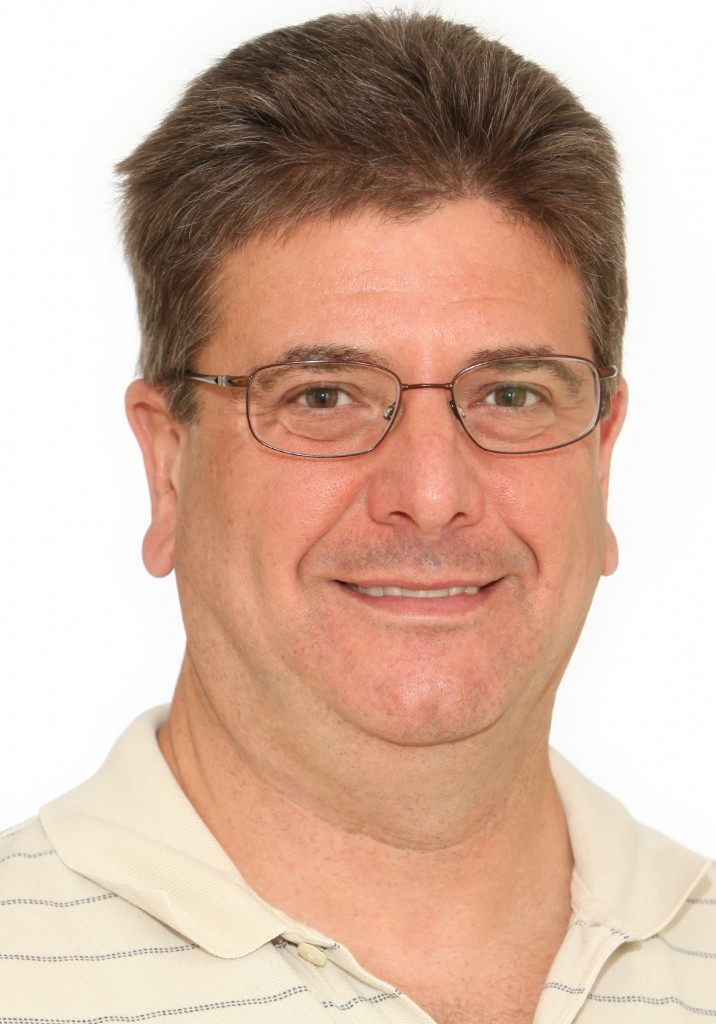 received his BS in Biology from the Pennsylvania State University, his MS in Zoology (Toxicology Minor) from The North Carolina State University, and his PhD in Toxicology from the University of North Carolina at Chapel Hill, specializing in Neurotoxicology. After post-doctoral training at the National Institute of Environmental Health Sciences (absorption, distribution, metabolism and excretion) and the U.S. Environmental Protection Agency (EPA) (Neurophysiology), Dr. Herr accepted a position in the Neurophysiological Toxicology Branch at EPA. He became the Branch Chief of the neurophysiology group, and later of the combined neurophysiology and neurobehavioral groups. Dr. Herr is an active member of the Society of Toxicology [including Neurotoxicology and Mixtures Specialty Sections (past President)] and the Society for Neuroscience. Dr. Herr was a co-author for the EPA’s Test Guidelines “Neurophysiology: Sensory Evoked Potentials; OPPTS 870.6855.” While having served on multiple Agency committees, Dr. Herr currently serves on the Risk Assessment Forum’s Cumulative Risk Assessment Technical Panel, the Health and Environmental Sciences Institute Subcommittee on Translational Safety Biomarker Assessment of Neurotoxicity.
received his BS in Biology from the Pennsylvania State University, his MS in Zoology (Toxicology Minor) from The North Carolina State University, and his PhD in Toxicology from the University of North Carolina at Chapel Hill, specializing in Neurotoxicology. After post-doctoral training at the National Institute of Environmental Health Sciences (absorption, distribution, metabolism and excretion) and the U.S. Environmental Protection Agency (EPA) (Neurophysiology), Dr. Herr accepted a position in the Neurophysiological Toxicology Branch at EPA. He became the Branch Chief of the neurophysiology group, and later of the combined neurophysiology and neurobehavioral groups. Dr. Herr is an active member of the Society of Toxicology [including Neurotoxicology and Mixtures Specialty Sections (past President)] and the Society for Neuroscience. Dr. Herr was a co-author for the EPA’s Test Guidelines “Neurophysiology: Sensory Evoked Potentials; OPPTS 870.6855.” While having served on multiple Agency committees, Dr. Herr currently serves on the Risk Assessment Forum’s Cumulative Risk Assessment Technical Panel, the Health and Environmental Sciences Institute Subcommittee on Translational Safety Biomarker Assessment of Neurotoxicity.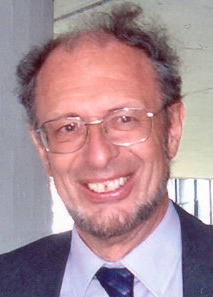 initially graduated with a BSc in Botany and Zoology from the University of Hull (1964) and subsequently obtained a PhD (1968) and DSc (1997) in Radiation Biology from the University of London. He moved to Oxford in 1970 and between 1981 and 2001 was the Professor and Director of Radiobiological Research at the University of Oxfords and until 2007 the Consultant Radiobiologist to the Oxford Radcliffe Hospitals NHS Trust (recently renamed the University of Oxford NHS Trust).
initially graduated with a BSc in Botany and Zoology from the University of Hull (1964) and subsequently obtained a PhD (1968) and DSc (1997) in Radiation Biology from the University of London. He moved to Oxford in 1970 and between 1981 and 2001 was the Professor and Director of Radiobiological Research at the University of Oxfords and until 2007 the Consultant Radiobiologist to the Oxford Radcliffe Hospitals NHS Trust (recently renamed the University of Oxford NHS Trust).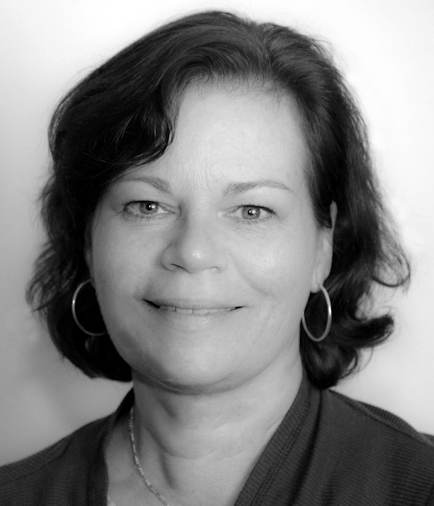 is a scientist at the National Aeronautics and Space Administration (NASA) Langley Research Center in Hampton, Virginia where she works on space radiation risk modeling, countermeasure approaches and technologies supporting human space exploration missions. She previously served as the Deputy Element Scientist for the NASA Space Radiation Element at the Johnson Space Center and was responsible for scientific management and strategic planning, ensuring that the Element’s research portfolio was organized to understand and mitigate radiation health risks for the astronaut corp. She was a visiting scientist at the Brookhaven National Laboratory and is an experienced user of the NASA Space Radiation Research Laboratory where her research work centered on evaluation of the effects of charged particle radiation on cancer processes using advanced human three-dimenstional cell culture models. She joined NASA in 2004 as the lead scientist for the Advanced Technology Development Laboratory in the Cell Science Program.
is a scientist at the National Aeronautics and Space Administration (NASA) Langley Research Center in Hampton, Virginia where she works on space radiation risk modeling, countermeasure approaches and technologies supporting human space exploration missions. She previously served as the Deputy Element Scientist for the NASA Space Radiation Element at the Johnson Space Center and was responsible for scientific management and strategic planning, ensuring that the Element’s research portfolio was organized to understand and mitigate radiation health risks for the astronaut corp. She was a visiting scientist at the Brookhaven National Laboratory and is an experienced user of the NASA Space Radiation Research Laboratory where her research work centered on evaluation of the effects of charged particle radiation on cancer processes using advanced human three-dimenstional cell culture models. She joined NASA in 2004 as the lead scientist for the Advanced Technology Development Laboratory in the Cell Science Program. is a faculty Member in the Department of Epidemiology and Cancer Control at St. Jude Children’s Research Hospital and maintains a clinical appointment through the Department of Psychology. He received his PhD from Florida State University, with an emphasis in Clinical Psychology and Neuroscience. He then completed a clinical psychology internship, clinical neuropsychology residency, and biological psychology fellowship at the University of Oklahoma Health Sciences Center. At St. Jude, Dr. Krull is Director of the Cognitive Neuroscience Laboratory, where he oversees long-term survivorship research involving neurocognitive, neuroimaging and neurologic outcomes. He has published over 200 peer-reviewed manuscripts, and is the recipient of multiple research grants, from the National Cancer Institute and the National Institute of Mental Health, including a T32 training grant for postdoctoral fellows. His research is focused on central nervous system integrity and function in long-term survivors of childhood leukemia and lymphoma. He also leads clinical trials targeting sleep and neural stimulation, aimed at improving central nervous system outcomes. In addition to his research efforts at St. Jude, Dr. Krull is Chair of the Psychology Working Group for the multi-institutional Childhood Cancer Survivor Study and is a member of the Survivorship and Outcomes Steering Committee in the Children’s Oncology Group (COG). He also leads efforts in COG and the Internal Guidelines Harmonization Group to establish and update long-term follow-up guidelines focused on neurocognitive outcomes in survivors of childhood cancer.
is a faculty Member in the Department of Epidemiology and Cancer Control at St. Jude Children’s Research Hospital and maintains a clinical appointment through the Department of Psychology. He received his PhD from Florida State University, with an emphasis in Clinical Psychology and Neuroscience. He then completed a clinical psychology internship, clinical neuropsychology residency, and biological psychology fellowship at the University of Oklahoma Health Sciences Center. At St. Jude, Dr. Krull is Director of the Cognitive Neuroscience Laboratory, where he oversees long-term survivorship research involving neurocognitive, neuroimaging and neurologic outcomes. He has published over 200 peer-reviewed manuscripts, and is the recipient of multiple research grants, from the National Cancer Institute and the National Institute of Mental Health, including a T32 training grant for postdoctoral fellows. His research is focused on central nervous system integrity and function in long-term survivors of childhood leukemia and lymphoma. He also leads clinical trials targeting sleep and neural stimulation, aimed at improving central nervous system outcomes. In addition to his research efforts at St. Jude, Dr. Krull is Chair of the Psychology Working Group for the multi-institutional Childhood Cancer Survivor Study and is a member of the Survivorship and Outcomes Steering Committee in the Children’s Oncology Group (COG). He also leads efforts in COG and the Internal Guidelines Harmonization Group to establish and update long-term follow-up guidelines focused on neurocognitive outcomes in survivors of childhood cancer. is a Marine/Exotics Veterinarian and active U.S. Astronaut currently assigned to National Aeronautics and Space Administration’s (NASA) Johnson Space Center in Houston, Texas. He received his DVM from the Ohio State University College of Veterinary Medicine in 1985 and was later accepted to a 2 y joint internship in exotic animal medicine and comparative pathology at the Baltimore Zoo and the Johns Hopkins University School of Medicine. After completing his internship, Dr. Linnehan served as chief clinical veterinarian for the U.S. Navy’s Marine Mammal Program, initiating research in cetacean and pinniped anesthesia, orthopedics, drug pharmacokinetics, and reproduction in direct support of U.S. Navy mobile marine mammal systems stationed in California, Florida, and Hawaii. Dr. Linnehan was selected for astronaut training by NASA in March 1992 and is a veteran of four Space Shuttle missions, logging over 58 d in space, including six EVAs (spacewalks) totaling 42 h and 11 min. In 2009 he received his Master’s in Public Administration from the Harvard Kennedy School of Government in Cambridge, Massachusetts and later completed a 2 y Interagency Personnel Agreement at the Texas A&M Office of Strategic Initiatives. Presently, Dr. Linnehan is working on advanced biomedical countermeasures for NASA’s Human Research Program in preparation for future human deep-space exploration initiatives as well as ongoing support of current International Space Station life science research.
is a Marine/Exotics Veterinarian and active U.S. Astronaut currently assigned to National Aeronautics and Space Administration’s (NASA) Johnson Space Center in Houston, Texas. He received his DVM from the Ohio State University College of Veterinary Medicine in 1985 and was later accepted to a 2 y joint internship in exotic animal medicine and comparative pathology at the Baltimore Zoo and the Johns Hopkins University School of Medicine. After completing his internship, Dr. Linnehan served as chief clinical veterinarian for the U.S. Navy’s Marine Mammal Program, initiating research in cetacean and pinniped anesthesia, orthopedics, drug pharmacokinetics, and reproduction in direct support of U.S. Navy mobile marine mammal systems stationed in California, Florida, and Hawaii. Dr. Linnehan was selected for astronaut training by NASA in March 1992 and is a veteran of four Space Shuttle missions, logging over 58 d in space, including six EVAs (spacewalks) totaling 42 h and 11 min. In 2009 he received his Master’s in Public Administration from the Harvard Kennedy School of Government in Cambridge, Massachusetts and later completed a 2 y Interagency Personnel Agreement at the Texas A&M Office of Strategic Initiatives. Presently, Dr. Linnehan is working on advanced biomedical countermeasures for NASA’s Human Research Program in preparation for future human deep-space exploration initiatives as well as ongoing support of current International Space Station life science research. is a Professor of Radiation Oncology and Pathology at the University of Maryland, School of Medicine in Baltimore, is recognized internationally as an expert on the effects of radiation on the hematopoietic and gastrointestinal systems in large animal models and their treatment, in vivo, with supportive care and selected organ-specific medical countermeasures against acute and delayed effects of acute radiation exposure.
is a Professor of Radiation Oncology and Pathology at the University of Maryland, School of Medicine in Baltimore, is recognized internationally as an expert on the effects of radiation on the hematopoietic and gastrointestinal systems in large animal models and their treatment, in vivo, with supportive care and selected organ-specific medical countermeasures against acute and delayed effects of acute radiation exposure.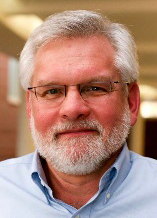 is a Professor of Neuroscience and Neurology and member of the Del Monte Neuroscience Institute at the University of Rochester School of Medicine and Dentistry in Rochester, New York. His research focuses on neuroinflammation and glial cell biology, emphasizing cellular interactions in in neurodegenerative disorders, including Alzheimer’s disease, as well as in central nervous system radiation exposure, and how these contribute to pathology and cognitive deficits in preclinical models. His laboratory has participated in ground-based radiation research studies for the National Aeronautics and Space Administration since 2004, and is a member of NCRP Scientific Committee 1-24P2 on Radiation Exposures in Space and the Potential for Central Nervous System Effects (Phase II).
is a Professor of Neuroscience and Neurology and member of the Del Monte Neuroscience Institute at the University of Rochester School of Medicine and Dentistry in Rochester, New York. His research focuses on neuroinflammation and glial cell biology, emphasizing cellular interactions in in neurodegenerative disorders, including Alzheimer’s disease, as well as in central nervous system radiation exposure, and how these contribute to pathology and cognitive deficits in preclinical models. His laboratory has participated in ground-based radiation research studies for the National Aeronautics and Space Administration since 2004, and is a member of NCRP Scientific Committee 1-24P2 on Radiation Exposures in Space and the Potential for Central Nervous System Effects (Phase II). is an Associate Attending Neuropsychologist in the Department of Psychiatry and Behavioral Sciences at Memorial Sloan-Kettering Cancer Center and an Associate Professor of Psychology in the Department of Psychiatry and the Department of Anesthesiology at Weill Cornell Medical College. His neuroimaging research focuses on the cognitive effects of cancer diagnosis and treatment, including surgery, anesthesia, chemotherapy, radiotherapy, and endocrine therapy, utilizing structural and functional techniques, as well as neurocognitive measures. His clinical expertise is in the assessment of cognitive abilities in adults following cancer treatment. He completed his postdoctoral training in clinical neuropsychology at Columbia University College of Physicians and Surgeons, a second fellowship in neuroimaging at Weill Cornell Medical College, and completed a predoctoral residency in neuropsychology at Yale University School of Medicine.
is an Associate Attending Neuropsychologist in the Department of Psychiatry and Behavioral Sciences at Memorial Sloan-Kettering Cancer Center and an Associate Professor of Psychology in the Department of Psychiatry and the Department of Anesthesiology at Weill Cornell Medical College. His neuroimaging research focuses on the cognitive effects of cancer diagnosis and treatment, including surgery, anesthesia, chemotherapy, radiotherapy, and endocrine therapy, utilizing structural and functional techniques, as well as neurocognitive measures. His clinical expertise is in the assessment of cognitive abilities in adults following cancer treatment. He completed his postdoctoral training in clinical neuropsychology at Columbia University College of Physicians and Surgeons, a second fellowship in neuroimaging at Weill Cornell Medical College, and completed a predoctoral residency in neuropsychology at Yale University School of Medicine. is currently the L. Allen Barker Professor of Pharmacology at the Louisiana State University Health Sciences Center in New Orleans, Louisiana. Dr. Winsauer received his BS in Experimental Psychology from Georgetown University in Washington, D.C., and his Masters and Doctoral degrees in Experimental Psychology from the American University. After he obtained his doctoral degree, he worked as a Research Psychologist for the Armed Forces Radiobiology Research Institute (AFRRI) identifying radiation- and drug-induced disruptions in complex behavioral processes involving learning and memory. For the past 24 y, Dr. Winsauer’s research projects have focused on the behavioral pharmacology of all classes of abused drug in a variety of animal species. In collaboration with Louisiana State University’s Alcohol Research Center, he also began studies aimed at evaluating the neuropsychological deficits produced by alcohol and delta-9-tetrahydrocannabinol in a preclinical animal model of HIV infection. Dr. Winsauer currently has National Institutes of Health funding to investigate the interaction between gonadal hormones and cannabinoid abuse, and the subsequent effects this interaction has on central nervous system (CNS) development as it relates to learning and memory. These studies seek to determine if drug abuse during adolescence, a significant period of maturation, can enhance an individual’s vulnerability to CNS dysfunction and produce persistent changes in the brain that could set the stage for a lifetime of mental health issues such as drug taking or abuse. The same CNS vulnerability likely exists for exposure to different types of radiation, particularly with repeated exposures.
is currently the L. Allen Barker Professor of Pharmacology at the Louisiana State University Health Sciences Center in New Orleans, Louisiana. Dr. Winsauer received his BS in Experimental Psychology from Georgetown University in Washington, D.C., and his Masters and Doctoral degrees in Experimental Psychology from the American University. After he obtained his doctoral degree, he worked as a Research Psychologist for the Armed Forces Radiobiology Research Institute (AFRRI) identifying radiation- and drug-induced disruptions in complex behavioral processes involving learning and memory. For the past 24 y, Dr. Winsauer’s research projects have focused on the behavioral pharmacology of all classes of abused drug in a variety of animal species. In collaboration with Louisiana State University’s Alcohol Research Center, he also began studies aimed at evaluating the neuropsychological deficits produced by alcohol and delta-9-tetrahydrocannabinol in a preclinical animal model of HIV infection. Dr. Winsauer currently has National Institutes of Health funding to investigate the interaction between gonadal hormones and cannabinoid abuse, and the subsequent effects this interaction has on central nervous system (CNS) development as it relates to learning and memory. These studies seek to determine if drug abuse during adolescence, a significant period of maturation, can enhance an individual’s vulnerability to CNS dysfunction and produce persistent changes in the brain that could set the stage for a lifetime of mental health issues such as drug taking or abuse. The same CNS vulnerability likely exists for exposure to different types of radiation, particularly with repeated exposures. is the Chancellor’s Professor Emeritus of Nuclear Engineering, The University of Tennessee, Knoxville. He has a BS in Physics from the U.S. Naval Academy, an MS in Physics (experimental nuclear) from the Naval Postgraduate School, and a PhD in Physics (Theoretical Nuclear) from the University of Idaho. He served for 7 y as a nuclear submarine engineer officer. After a short stint as a Research Assistant Professor of Physics at Old Dominion University, he became a National Aeronautics and Space Administration (NASA) Research Scientist and Senior Research Scientist where his research has focused on nuclear interactions of cosmic rays and their implications for space radiation shielding and crew protection. For these efforts, he was awarded a NASA Scientific Achievement Medal. In 1995 he retired from NASA and entered academia at the University of Tennessee where he retired in June 2017. He is a Fellow of the American Nuclear Society, a Fellow of the Health Physics Society, an Associate Fellow of the American Institute of Aeronautics and Astronautics, and an elected member of the International Academy of Astronautics. In 1998 he served as the Organizing Committee Chair for the NCRP Annual Meeting and was elected a Member of Council. He was appointed as a Distinguished Emeritus Member of Council in 2010. He has served as a member of Scientific Committee (SC) 75, Chair of SC 1-7, Consultant to SC 1-24 Phase I, Staff Consultant to SC 1-24 Phase II, and Staff Consultant to SC 8-1.
is the Chancellor’s Professor Emeritus of Nuclear Engineering, The University of Tennessee, Knoxville. He has a BS in Physics from the U.S. Naval Academy, an MS in Physics (experimental nuclear) from the Naval Postgraduate School, and a PhD in Physics (Theoretical Nuclear) from the University of Idaho. He served for 7 y as a nuclear submarine engineer officer. After a short stint as a Research Assistant Professor of Physics at Old Dominion University, he became a National Aeronautics and Space Administration (NASA) Research Scientist and Senior Research Scientist where his research has focused on nuclear interactions of cosmic rays and their implications for space radiation shielding and crew protection. For these efforts, he was awarded a NASA Scientific Achievement Medal. In 1995 he retired from NASA and entered academia at the University of Tennessee where he retired in June 2017. He is a Fellow of the American Nuclear Society, a Fellow of the Health Physics Society, an Associate Fellow of the American Institute of Aeronautics and Astronautics, and an elected member of the International Academy of Astronautics. In 1998 he served as the Organizing Committee Chair for the NCRP Annual Meeting and was elected a Member of Council. He was appointed as a Distinguished Emeritus Member of Council in 2010. He has served as a member of Scientific Committee (SC) 75, Chair of SC 1-7, Consultant to SC 1-24 Phase I, Staff Consultant to SC 1-24 Phase II, and Staff Consultant to SC 8-1. News & Events
News & Events